connect with the hour glass
News • 09 Sep 2021
Girard-Perregaux Unveils a New Tourbillon with Three Flying Bridges
Before the Tourbillon with Three Flying Bridges, Girard-Perregaux unveiled the ‘Tourbillon with Three Gold Bridges’ in 1867. Unusually, the bridges, three functional parts typically hidden from view, were made an aesthetic element. By taking this decision, the Manufacture became known for making the invisible visible – this approach radically altered the way the manufacturer would make watches in the future.
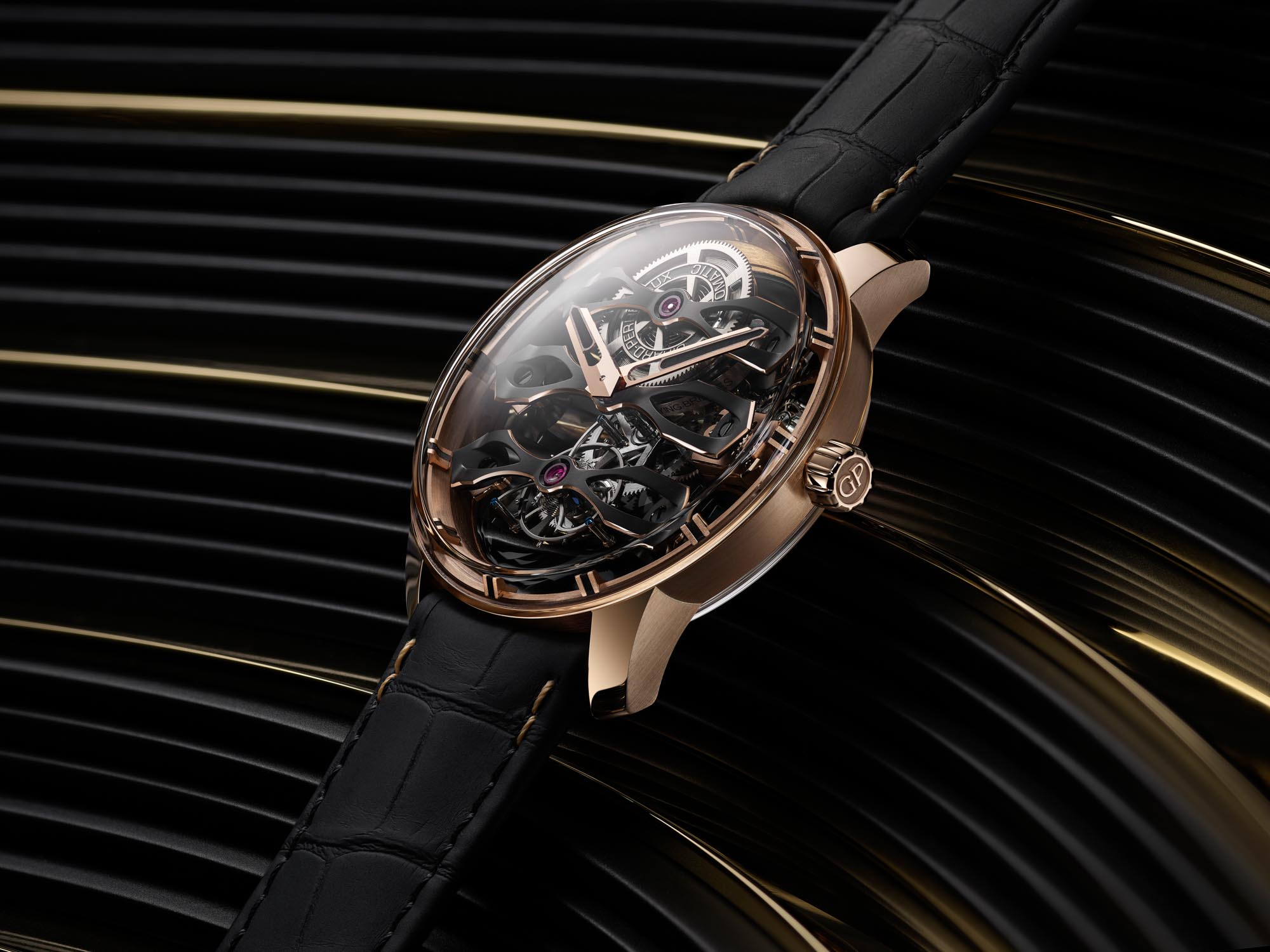
230TH Anniversary
For its 230th anniversary, Girard-Perregaux is revisiting its iconic models and releasing new creations which draw inspiration from its past. At Geneva Watch Days 2021, Girard-Perregaux introduced the Tourbillon with Three Flying Bridges, featuring three Neo Bridges made of pink gold – the first time all three Neo bridges have been made from this noble metal. After releasing the Free Bridge in 2020, the release of the new Tourbillon with Three Flying Bridges is the final addition to join the company’s Bridges collection.
Discover our Girard-Perregaux watches
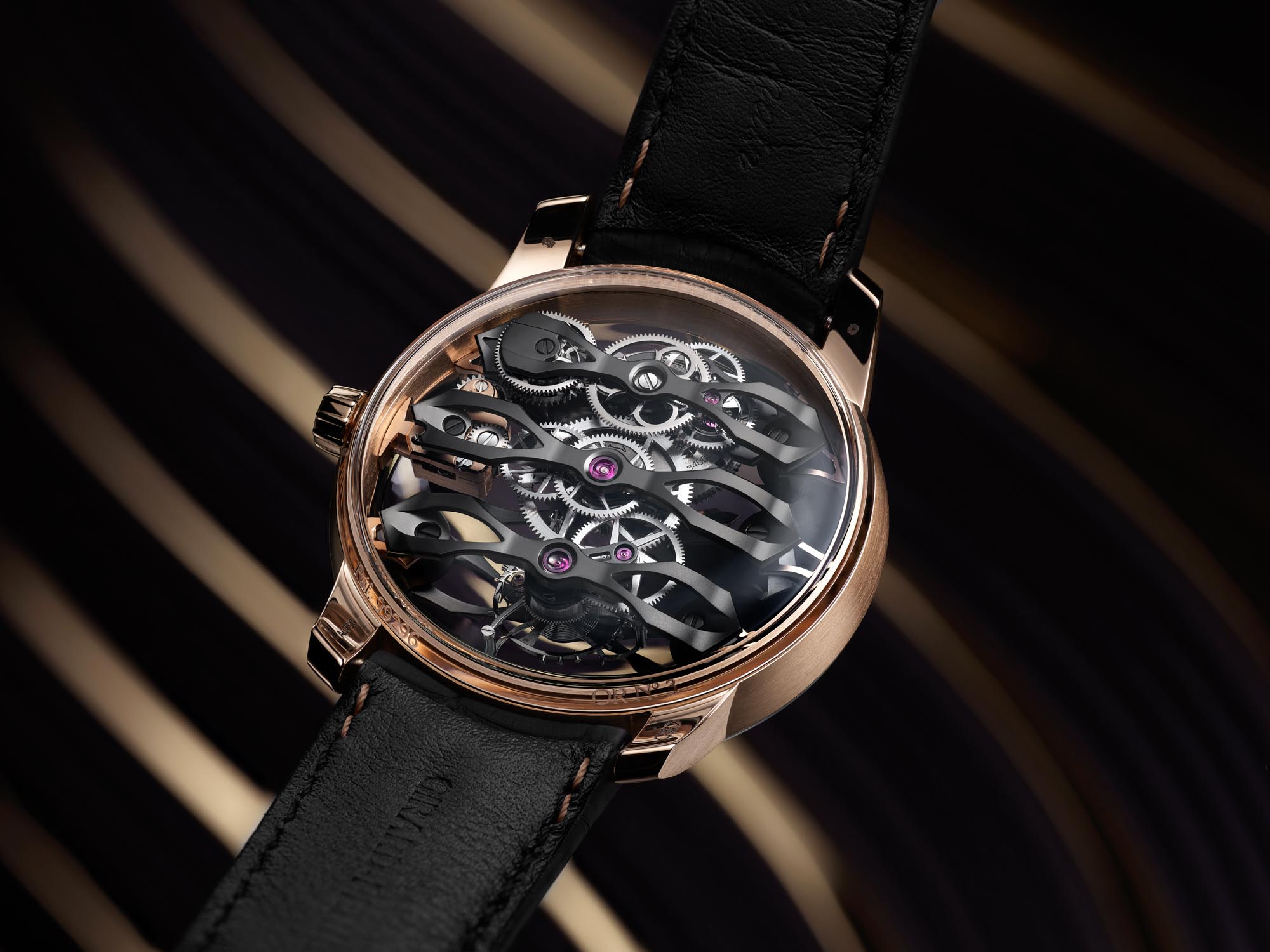
Why Three Bridges?
The three bridges not only support the geartrain, barrel and tourbillon, they also act as the main-plate. The result is that the bridges appear to float in mid-air. This unusual construction required the Maison to affix the indexes to the flange which in turn is attached to the case. The upper and lower surfaces of the pink gold bridges are dressed in black PVD coating; only the slim, vertical flanks of each bridge are exposed. The bridges can be described as ‘discreet luxury’; where only those in the know are aware of their precious nature.
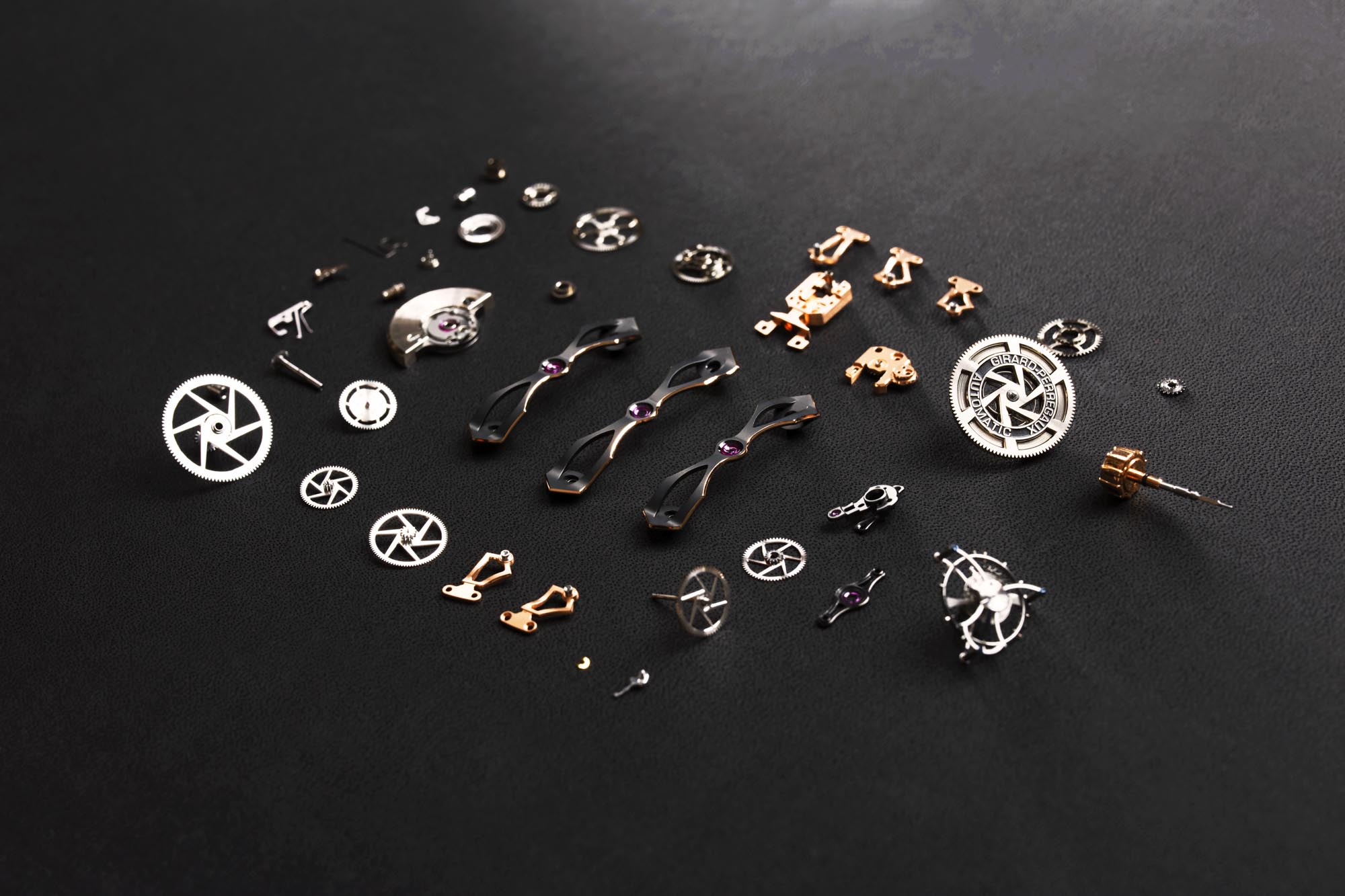
Upholding Traditional Watchmaking Techniques
Each bridge is painstakingly chamfered by hand using a small piece of boxwood, a technique employed for hundreds of years. It takes a time-served artisan one full day to achieve a perfect finish. While the Tourbillon with Three Flying Bridges appears contemporary, it continues to uphold many of the traditional techniques synonymous with Haute Horlogerie.
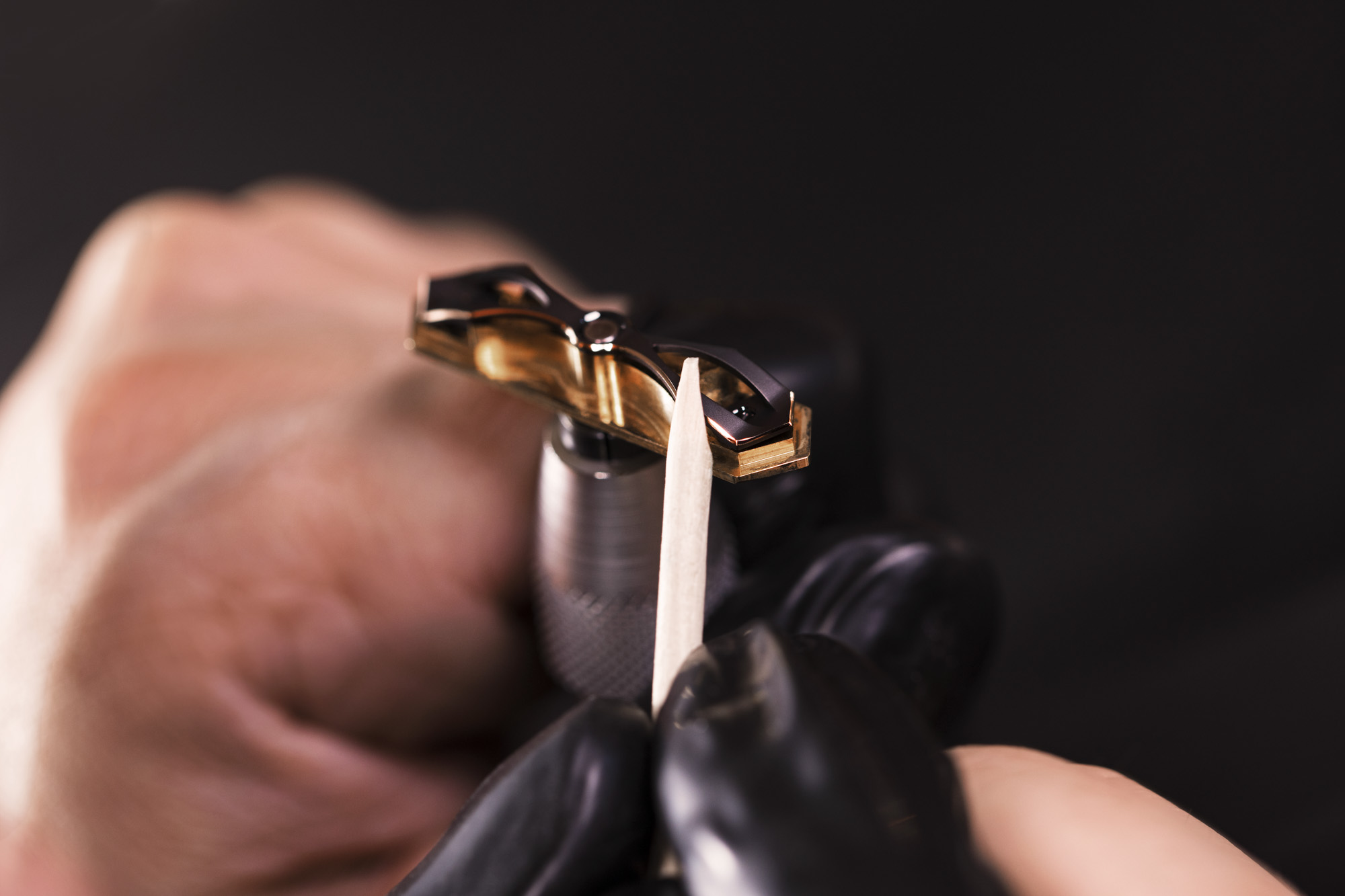
Patrick Pruniaux, CEO of Girard-Perregaux, remarks, “We wanted to create a watch that provides a bridge to our past but also demonstrates our vision for the future. It draws on the talents of our artisans and watchmakers, pairing traditional methods with innovative techniques.
The Tourbillon with Three Flying Bridges embraces three-dimensional architecture, allowing the wearer to see many parts typically hidden away. Since its inception, Girard-Perregaux has made the invisible visible, something I expect it will continue to do for the next 230 years. However, where our team has chosen to add a slight twist is by making the bridges from gold and then shrouding them in black PVD, save for their sides. It seems wonderfully indulgent, a trait synonymous with luxury, that will remain a secret to most people, except for those in the know.”
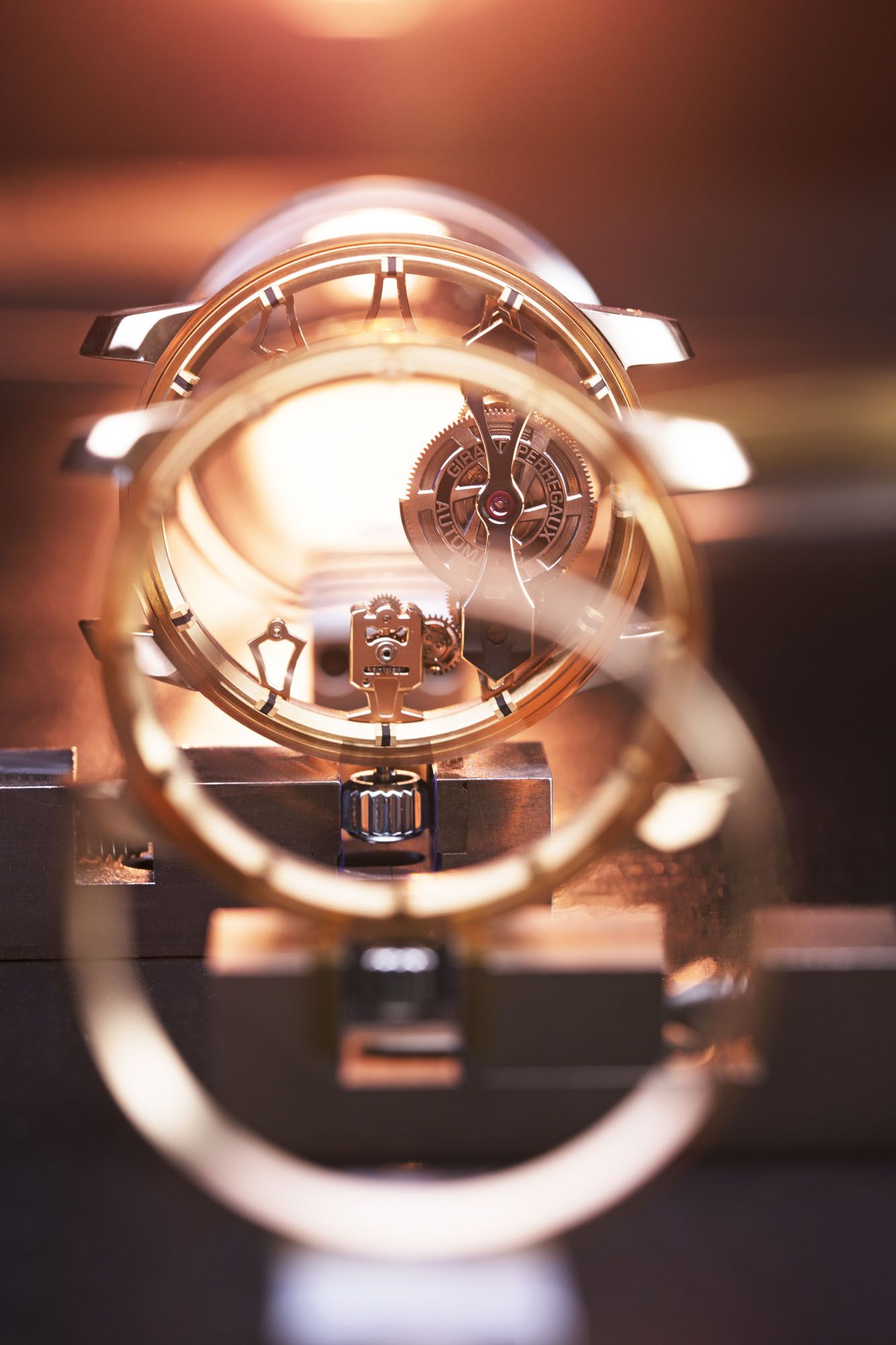
Legible Dial Design
Despite its complexity, the dial remains clean, uncluttered, and simple to read, with the barrel, gear train and tourbillon arranged along a north-south axis. The barrel is positioned in the upper portion of the dial and sits above a white gold micro-rotor, harnessing energy from the motion of the wearer’s wrist. The vertical sides of the rotor are engraved with the watch’s model name, a subtle detail which perfectly demonstrates the Manufacture’s attention to detail.
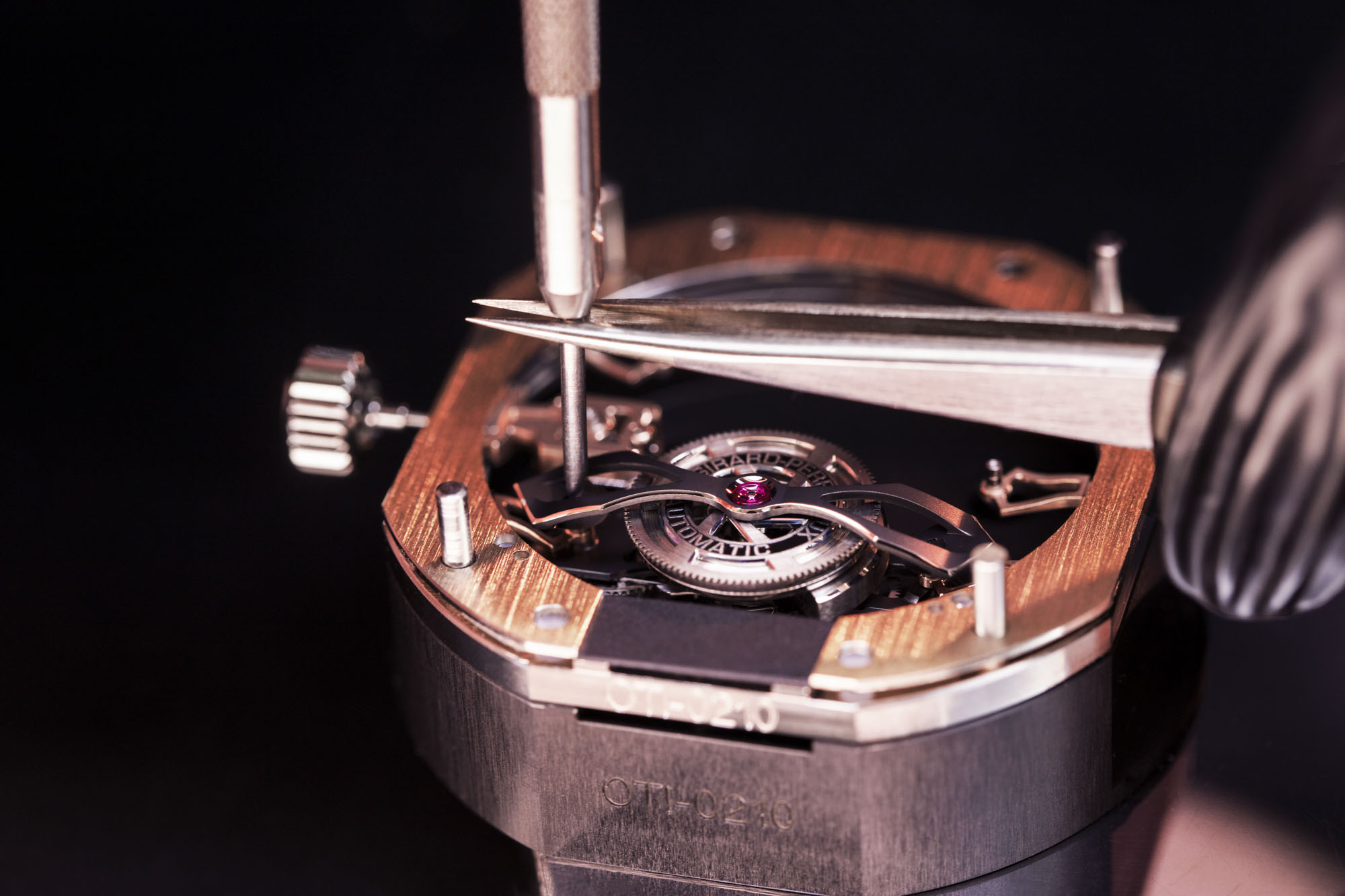
Subtle Historical Inspiration
The tourbillon is positioned to the base of the dial. Its cage is lyre-shaped, a historical design dating back to the 19th century, albeit in this instance it is made of ultra-modern Grade 5 titanium. A blued hand on the cage rotates 360° every minute and serves as a small seconds display. The tourbillon cage is comprised of 79 components and weighs a mere 0.25 grams. This remarkably low mass mitigates energy consumption, thereby contributing to the movement’s impressive power-reserve of 60 hours (minimum).
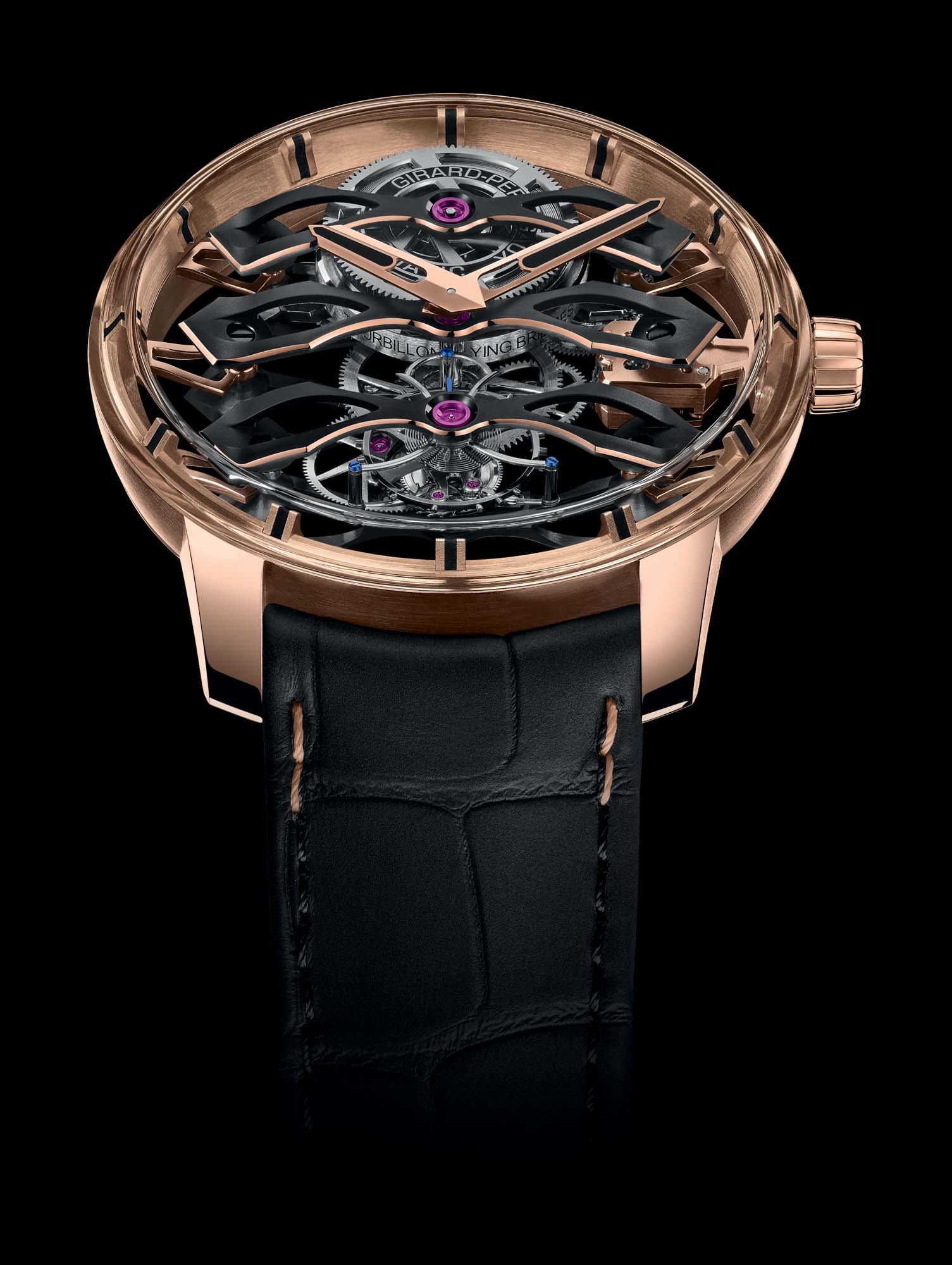
The sapphire crystal, positioned atop the dial, has gently sloping sides that curve downwards to the outer edge of the case middle, hence the model eschews a conventional bezel. To achieve this eye-catching aesthetic, it takes between four to five times more material than a regular sapphire crystal. It also necessitates much expertise to polish the crystal box to a flawless conclusion. Surprisingly, having expended much effort making this upper sapphire crystal, the time-served craftsperson has to repeat the exercise and make a similar crystal box to shroud the underside of the watch head. By equipping the Tourbillon with Three Flying Bridges with upper and lower crystal box sapphire crystals, the Manufacture has imbued the model with a harmonious degree of symmetry.
Discover our Girard-Perregaux watches


